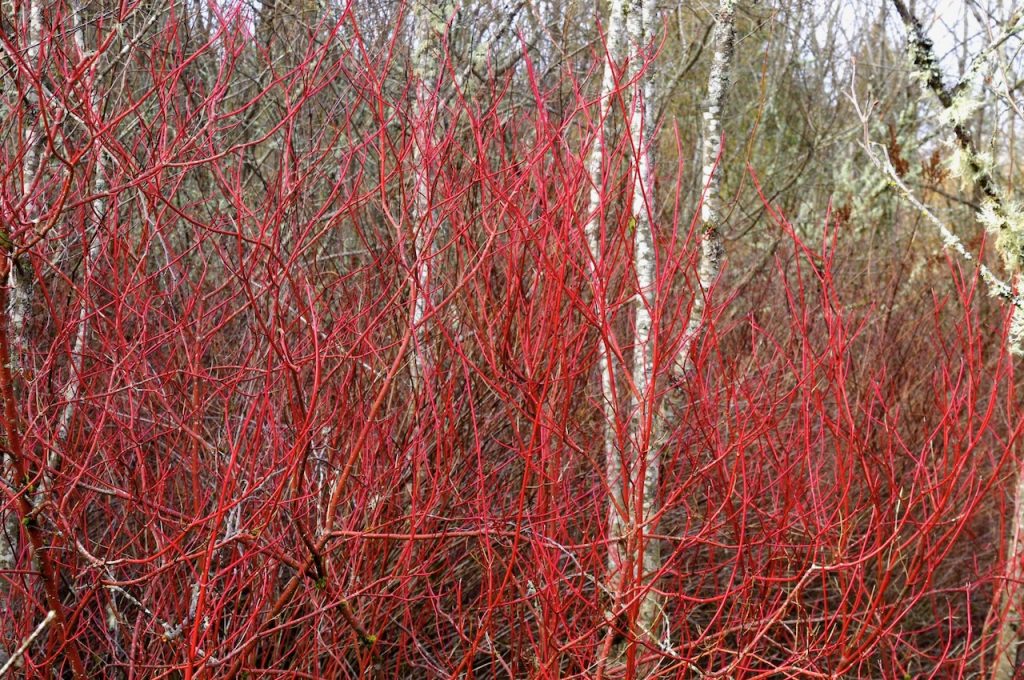by John Sparks
Walking the trails at Oaks Bottom, one cannot help but notice the dominance of English ivy and Himalayan blackberry in the understory. These are but two of a number of Eurasian species which have come to settle under the native canopy of cottonwood, alder, ash, maple, red-cedar and Douglas-fir. Here’s a sampling of a few other trespassers.
Shining geranium (Geranium lucidum)
This pretty little groundcover is the most recent immigrant of the species described here, arriving in North America in the 1970s. Its non-native cousins herb Robert (G. robertianum), dovefoot geranium (G. molle), and cutleaf geranium (G. dissectum) are also found at the Bottom, but shining geranium has formed a bright green carpet in many shaded areas, especially at the base of the bluff below Sellwood Park. The small pink flowers come out in spring and the plant blooms well into summer. In Europe, all these little geraniums are called crane’s bill or stork bill because of the shape of the seed capsule, which jettisons the seeds some distance from the original plant. Some leaves of these geraniums turn red towards the end of summer.

Shining geranium has flourished in Portland and the Willamette Valley and is classified as a noxious weed in both Washington and Oregon. Non-chemical methods of control include pulling individual plants before they come to seed, preferably in the winter months, and covering carpeted areas with a thick spread of mulch over a cardboard layer.
Poison hemlock (Conium maculatum)
Poison hemlock owes much of its notoriety to an ancient death sentence, that of the philosopher Socrates in 399 B.C., who was ordered to drink an infusion of the plant for disrespecting the state religion of Athens and corrupting the youth with “new ways of thinking.” Poison hemlock is a member of the parsley family, like the carrot and celery, but it contains the alkaloid coniine, a fairly small amount of which disrupts the central nervous system and causes respiratory failure in mammals. In Oaks Bottom, it can be found growing along steep slopes of the bluff, its large umbels of tiny white flowers similar to those of many parsleys, including Queen Anne’s lace or wild carrot (Daucus carota), another exotic species which flourishes in the park’s meadow. Poison hemlock’s stalks are marked with distinctive purplish blotches, however. Like many of the toughest weeds, poison hemlock doesn’t need direct sunlight to flourish, and a certain percentage of a plant’s seeds may germinate in late fall or winter if conditions are balmy enough.

The entire plant is toxic and, while ingesting the plant can induce symptoms within half an hour, coniine can also be absorbed through the skin. Even dry, dead specimens can hold the toxin for years. Always wear gloves and long sleeves when pulling poison hemlock, and remove the plants in the winter or spring, before they go to seed. As with other invasive weeds, any plants should be bagged and put in the garbage rather than in yard debris.
Traveler’s joy (Clematis vitalba)
Also known as old man’s beard, this deciduous climbing vine is most obvious in the fall and winter months when it’s fluffy seed heads festoon the upper reaches of its scaffolding, i.e. the trees and shrubs upon which it has chosen to run riot. The scented white flower clusters are not unattractive, but the sheer density and weight of the vine shades out the understory, stifles photosynthesis in the host, and causes branches to snap off. Vines can grow to 100 feet at a rate five to seven times faster than ivy, producing 100,000 seeds in a season. The plant is native to Europe and North Africa
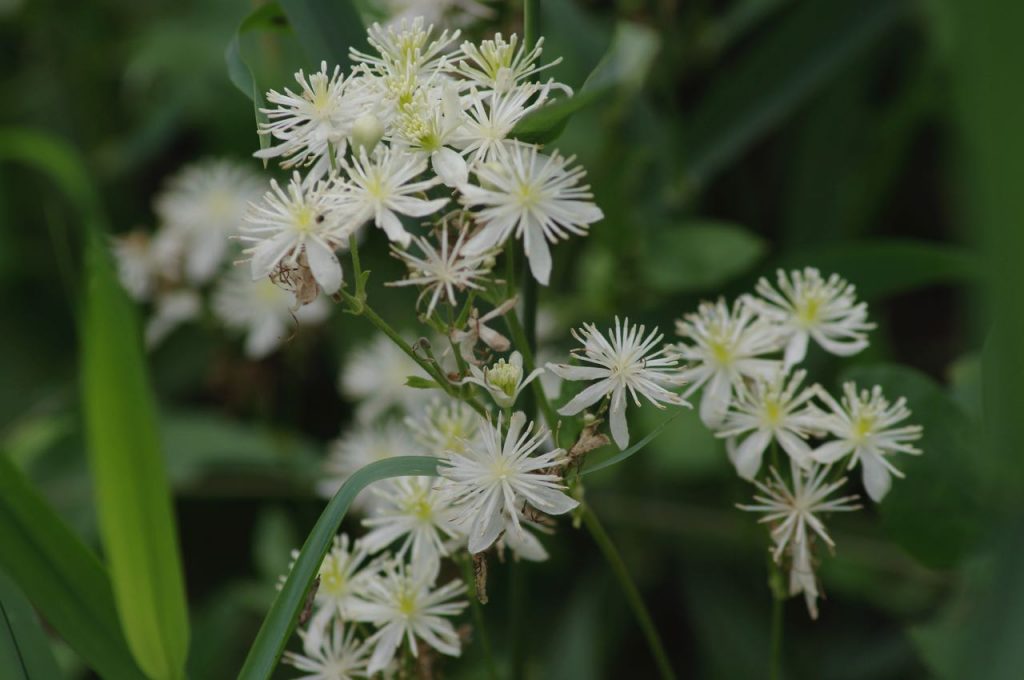

Most invasive weeds can be removed with a treatment of glyphosate, but that’s like cluster bombing the entire area and destroying every other plant, good and bad, in the bargain. Hand removal, i.e. digging out by the roots, is best done in the winter months if you can follow the vine down to its base. Subsequently, planting native ground covers can limit seed germination.
Lemon balm (Melissa officinalis)
Lemon balm, an aromatic plant in the mint family, has long been used in Western cultures as a calming herb, usually drunk as a tea and considered a cure against insomnia. Lemon balm is a former Herb of the Year, praised also for its uses in aromatherapy and as an attractor of honeybees. So what’s not to like? Its native habitat is in southern Europe and central Asia, not the Pacific Northwest. In Oaks Bottom, it can be seen scattered along the bluff slope, and there’s always a danger that it will carpet an entire area, thus eclipsing the native groundcover.
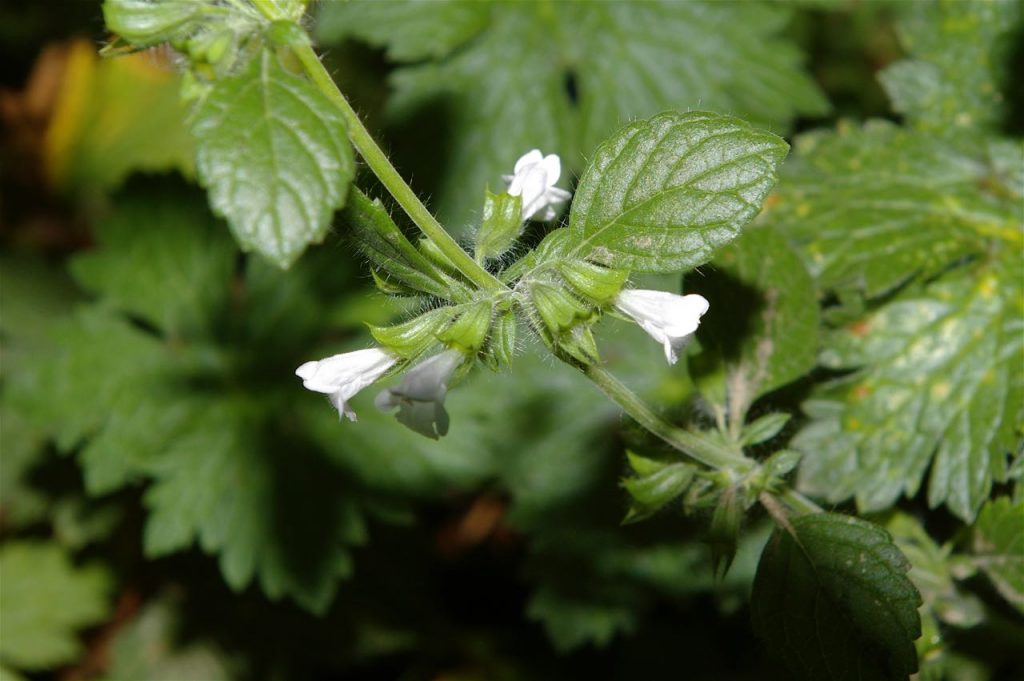
Oregon is the only state that lists lemon balm as an invasive weed. Hand removal is best when the plant is in flower (spring) but before the seed heads are set. Since new plants easily propagate from fragments of the parent clump, you’ll need to return in subsequent years and also plant native groundcovers, such as salal and Oregon grape, that will take over the area.
Purple loosestrife (Lythrum salicaria)
A sea of purple loosestrife rippling in the breeze is a beautiful sight, and yet this tall showy Eurasian plant, imported as an ornamental, is the bane of many wetlands throughout the United States, including Oaks Bottom. Purple loosestrife grows densely, often impeding water flow, forming a barrier on the shoreline, crowding out native plants, and reducing wildlife habitat. The tangled rhizomatous root systems alter the hydrology of wetland areas. A single plant can produce up to 2 ½ million tiny seeds, which can be dispersed via water movement and wildlife.
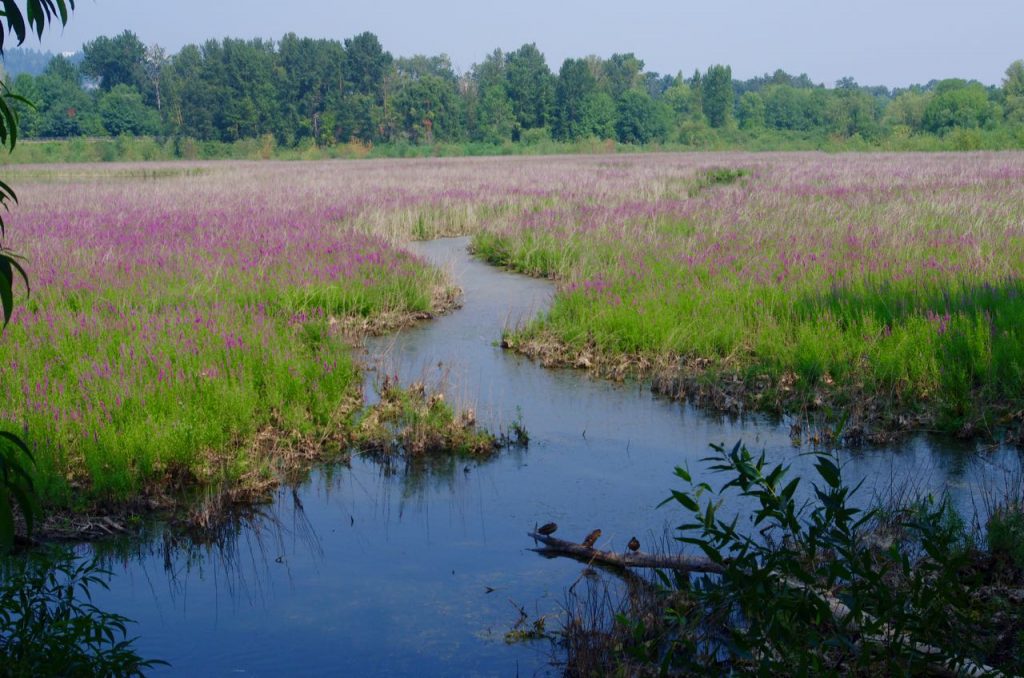
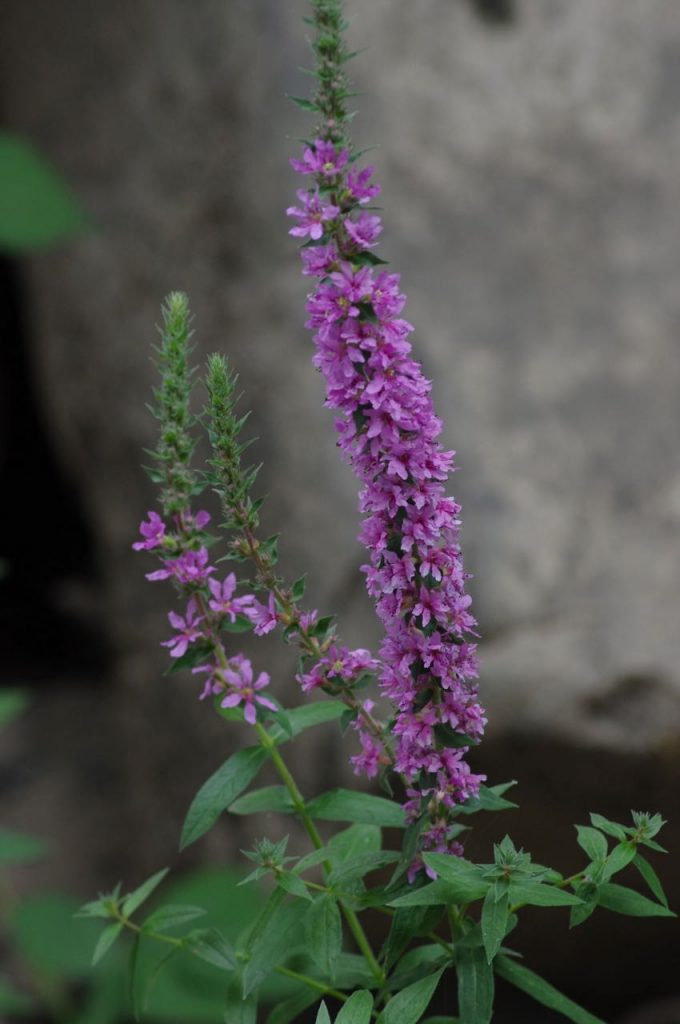
Purple loosestrife can no longer be sold in nurseries in the U.S. However, it is well-established here, especially in marshy areas in or near urban areas. Aquatic herbicides are effective but may damage native plants. However, biological controls have proved effective in Oregon. There are four species of weevil that consume only purple loosestrife. One species eats the flowers (and thus the seeds); another lays its eggs in the roots, which the larvae then consume; two other species (Galerucella) eat the leaves. Hand pulling can work with small populations.


